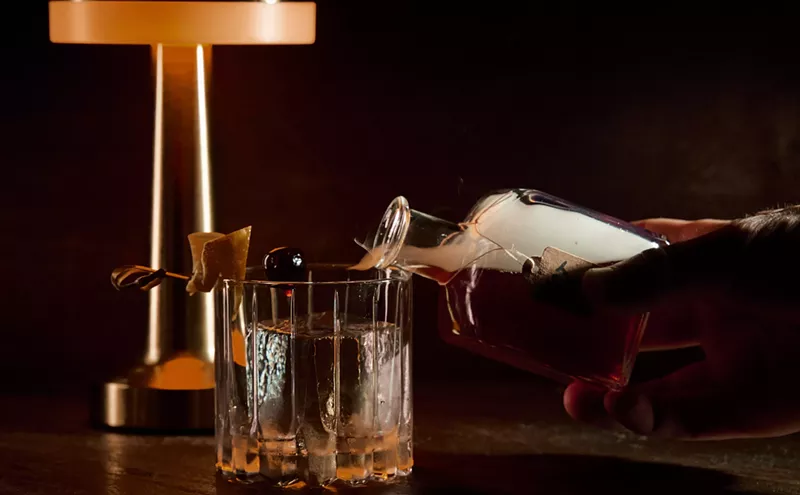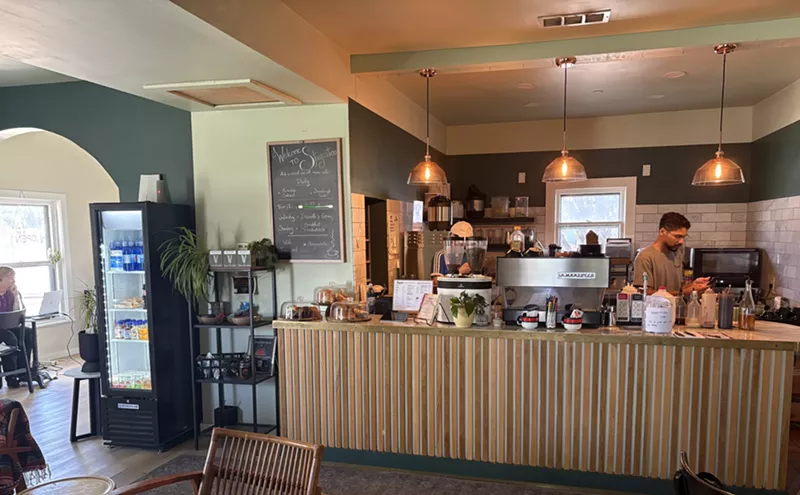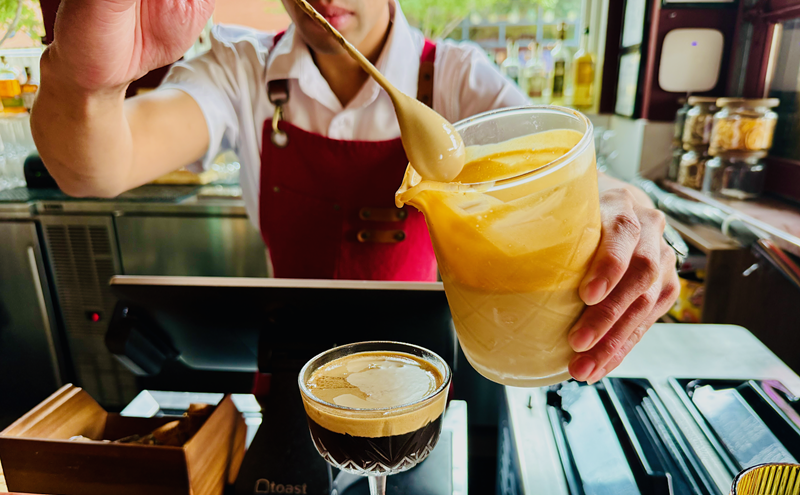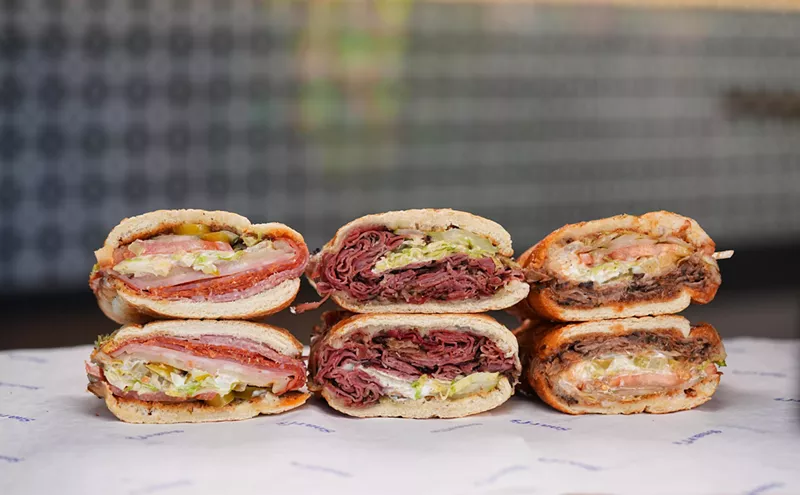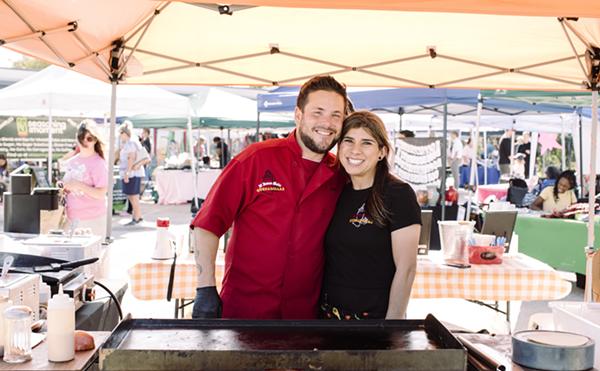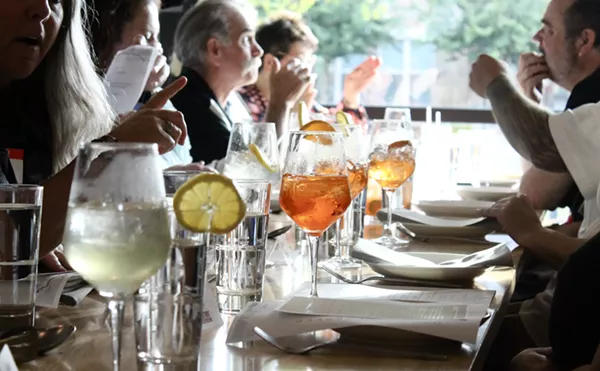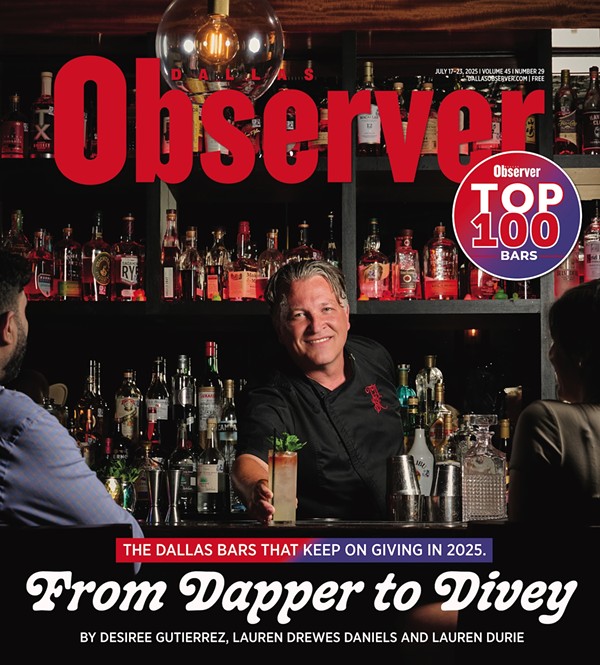—French proverb
Bijoux is for those who hate food—hate to be away from it, hate it when it's irresistibly beautiful, hate the poisons it sends coursing through the veins, hate the scourge of its addiction and, most of all, hate themselves for loving it so much. Bijoux is a crack house that entices hapless victims with the sheer debauchery of pig bellies, duck organs, steer loins and fish, all rendered and tended with brutal precision into fervent beauty.
"It was just a dream," says chef/owner Scott Gottlich, veteran of Lola. Gottlich is a brilliant tactician, a culinary Napoleon. He will overpower your tongue and conquer your throat, knowing precisely when and how to strike. Then he will loot you mercilessly.
Gottlich assembles his regiments in three ways. First is the chef's tasting, a two-and-a-half-hour, eight-course fusillade for $88 per person that must be ordered for every mouth at the table. Must. Negotiation with a server or manager is fruitless. The chef will not hear of fragmentation. It sullies the pacing and gunks the kitchen mechanics.
Then there is the three-course prix fixe: an appetizer, entrée and dessert or cheese. This is $52. The five-course prix fixe entitles you to an extra entrée and dessert plus an additional appetizer or cheese. This is $65. Compositions on the prix fixe menu may appear to be replicas of those on the chef's tasting menu, but this is an illusion. Gottlich vigorously differentiates to maintain a patina of exclusivity for his eight-course strafe.
Take foie gras. In both instances, the portion is ample and meticulously displayed. The texture is perfect, the searing flawless (though I always prefer the textural grit and heightened richness that follows a flurry of kosher salt, and there was none). On the prix fixe menu, the foie gras is served with a Meyer lemon waffle and beet gastric that minimally elevate the volume.
On the tasting menu, that same liver is served with a tiny banana bread pillow and dribbles of espresso sauce. The espresso sauce, with its whispered bitterness, is a highly calculated foil. The banana bread seems to muddy the proceedings. With foie gras, less is better. Just a few pinches of salt and the faint shadows of some sweet fruity element is all it needs.
Scallops also make varied appearances. Both versions display impeccably seared meat that's creamy yellow with a pitted bronze surface. The veneer is caramelized into near crispness, but it gives before it crunches. The meat hits sweet, but then unravels into a marine bitterness, thereby containing the seeds of its own foiling. Prix fixe scallops have thick ropes of lobster claw woven between them, pressing down on a pad of creamy polenta in Tellicherry peppercorn sauce. (These corns, from India's Malabar Coast, are considered the world's finest.) The tasting menu scallops have just the polenta. I would have added kosher salt to both but...
Gottlich scrambles every day, though he won't admit as much. He doesn't know exactly what his menus will be until they're printed at 5 p.m., a half hour shy of dinner service. What's fresh? What's available? What can I do to whatever it is that's fresh and available that will feed my curiosity and still taste good? This must be what courses through his mind.
Some days his tasting menu begins with a coddled egg in vodka cream and caviar. Sometimes it begins with a vibrant celery root salad with a tuft of micro-greens in truffle vinaigrette—earthy and exceptionally well seasoned. Slices of truffle burrow under the tangle; they're chewy, reeking of earthy bitterness.
"When you have more smells and things going on in the kitchen, it allows for more new ideas," Gottlich says. But this doesn't mean layering or fusing or compounding into a blur. "You see simplicity. We try not to convolute anything or have ingredients there for no reason."
From the prix fixe menu, a fluff of greens sweats thyme vinaigrette aromatized with lavender and honey. A simple soup of milk and butter with mushrooms and herb oil gets a brisk shock from Vidalia onions.
Bijoux, tucked into the Inwood Village shopping center in what was once Cheeseburger Cheeseburger, does have some flaws along with its regimented elegant precision. At the bar we order glasses of 2003 Joseph Faiveley Bourgogne (Pinot Noir) that was poured in Bordeaux glasses. This must have confused the bartender because she topped them off with pours of 2003 Chateau D'Arcins Haut-Médoc from a bottle resting nearby.
Service is so informed, routinized and choreographed (for the tasting menu, servers post at each diner and swing the plates into place in unison) that it seems a little stilted and overly self-conscious. Plus, the tasting menu cries for more palate cleansers slipped between courses (there was only one). Yet these flaws just make the experience more endearing, like a perfect smile with a chipped tooth. Oh, and the vegetarian risotto with shaved truffles and strands of grated Parmigiano-Reggiano is kind of watery.
So is the house-made fettuccine with forest mushrooms and Parmigiano-Reggiano. The pasta is supple, with just the right amount of give. Flavors are impeccable. The rich broth of mushroom jus and chicken stock melds the elements seamlessly.
But again, what's fascinating is how Gottlich rips everything apart and reassembles it depending on the day, the whim or the complexion of the chef's ensemble.
On a chef's tasting menu I was slipped, tender and rich skate wing is served with Spanish chorizo, fingerling potatoes and caramelized onions. Our skate wing—lightly dredged and fried to forge a crust—is served with a blood orange section and a piece of savagely wilted endive. Two days later, the skate wing mingles with choucroute (sauerkraut traditionally cooked in goose fat, onions and juniper berries in white wine) and golden raisins. Look at the brilliant variety of blades Gottlich uses to complement the skate's richness: chorizo spice, sour choucroute brininess and citrus all foiled respectively by caramelized onion, raisins and the inherent sweetness of the orange (the subdued endive provides the latter with reinforcements).
Pan-seared fillet of beef is served on a bed of haricots verts. Not far from this, a Kobe beef short rib (marinated in wine and herbs before a long braise) rests on a dab of creamy potatoes ringed by truffle jus. Gottlich shuns prime beef. The quality is too inconsistent, he says (the soiled little secret Dallas dares not mumble). Instead, he uses Sterling Silver beef seared in a steel pan heated on a flat top. The result is focused lust that isn't livery or flaccid, as fillets can be when they're served diaper-rash red. Kobe beef short rib frays into rich tacky fibers. The veal stock-based jus is beautifully potent, leaving a sticky film on the lips, as veal tends to do (insert palate cleanser here). Tasting concludes with a ham and cheese crêpe with wilted frisée. Then comes dessert: lemon cake saturated in citrus syrup, blood orange sherbet and a lemon confit.
You probably won't notice the room—sodden in muted elegance—because it is so utterly upstaged by the food. The stage should always be upstaged by what's happening on it. (Restaurants sometimes forget this.) Bijoux reeks of yearning and envy and lust and greed and garish impeccability and everything you hate about food when it's impossibly lovely. There. Now go and die—though you won't have enough left to tip the embalmer. 5450 Lovers Lane, No. 225, 214-350-6100. Open 5:30-10 p.m. daily. $$$$



